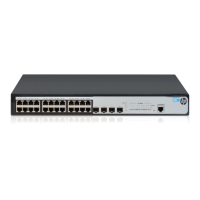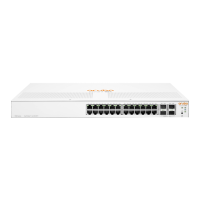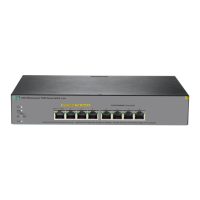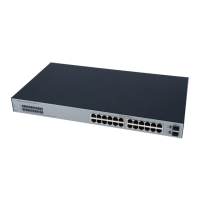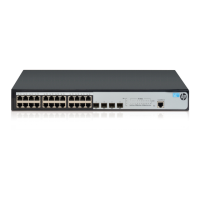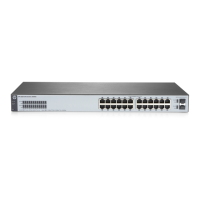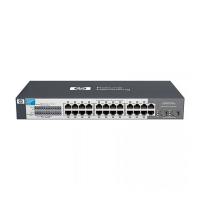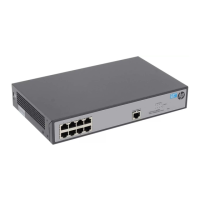233
NOTE:
• HP devices only support receiving protocol identity TLVs.
• Layer 3 Ethernet interfaces do not support IEEE 802.1 organizationally specific TLVs.
3. IEEE 802.3 organizationally specific TLVs
Table 74 IEEE 802.3 organizationally specific TLVs
T
MAC/PHY
Configuration/Status
Contains the rate and duplex capabilities of the sending port, support for
auto negotiation, enabling status of auto negotiation, and the current rate
and duplex mode.
Power Via MDI
Contains the power supply capability of the port, including the Power over
Ethernet (PoE) type (Power Sourcing Equipment (PSE) or Powered Device
(PD)), PoE mode, whether PSE power supply is supported, whether PSE
power supply is enabled, and whether the PoE mode is controllable.
Link Aggregation
Indicates the support of the port for link aggregation, the aggregation
capability of the port, and the aggregation status (or whether the link is in an
aggregation).
Maximum Frame Size
Indicates the supported maximum frame size. It is now the Maximum
Transmission Unit (MTU) of the port.
Power Stateful Control
Indicates the power state control configured on the sending port, including
the power type of the PSE/PD, PoE sourcing/receiving priority, and PoE
sourcing/receiving power.
NOTE:
The Power Stateful Control TLV is defined in IEEE P802.3at D1.0. The later versions no lon
this TLV. HP devices send this type of TLVs only after receiving them.
4. LLDP-MED TLVs
LLDP-MED TLVs provide multiple advanced applications for voice over IP (VoIP), such as basic
configuration, network policy configuration, and address and directory management. LLDP-MED
TLVs meet the voice device vendors’ requirements for cost effectiveness, ease of deployment, and
ease of management. In addition, LLDP-MED TLVs make deploying voice devices in Ethernet easier.
LLDP-MED TLVs are shown in Table 75.
Table 75 LLDP-MED TLVs
T
LLDP-MED Capabilities Allows a network device to advertise the LLDP-MED TLVs that it supports.
Network Policy
Allows a network device or terminal device to advertise the VLAN ID of the
specific port, the VLAN type, and the Layer 2 and Layer 3 priorities for specific
applications.
Extended
Power-via-MDI
Allows a network device or terminal device to advertise power supply
capability. This TLV is an extension of the Power Via MDI TLV.
Hardware Revision Allows a terminal device to advertise its hardware version.
Firmware Revision Allows a terminal device to advertise its firmware version.
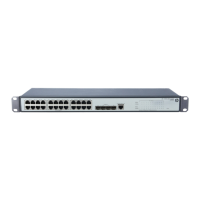
